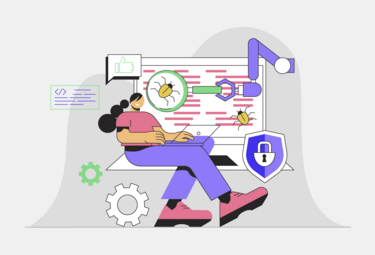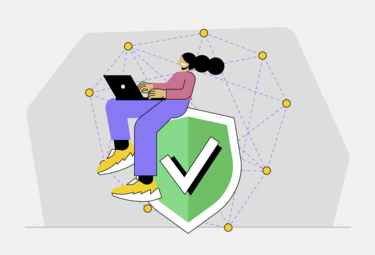As IT solutions evolve, newer and newer cyber threats are constantly emerging, forcing developers to take special care with web application security. Protecting servers involves not only the use of appropriate encryption, authentication or regular updates, but also the use of various types of firewalls to make it difficult for hackers to tamper with the source code.
What is a WAF system?
A WAF (Web Application Firewall) is filtering software designed to protect web applications from malicious attacks. This type of firewall operates automatically, i.e. it checks HTTP traffic in real time without user intervention. By implementing a WAF, a kind of shield is placed between the application (specifically, the server on which it resides) and Internet users.
The principles of the WAF firewall can be compared to a classic firewall, if only because it is based on a set of configurable rules that are designed to protect application security gaps and filter out harmful traffic.
WAF security is divided into two areas: whitelisting and blacklisting. When someone tries to access a protected application, the firewall first checks whether the user can access the site. If it is not whitelisted, the request is blocked. The blacklist, on the other hand, contains items that are immediately deemed unsafe, resulting in immediate blocking of access.
What threats does the WAF protect against?
The WAF security system protects websites against the most common forms of hacking attacks, involving interference with the back-end of a website or hacking into a database, such as:
- Cross Site Scripting - the insertion of malicious code into a web form or web application URL,
- Command Injection - the exploitation of input validation vulnerabilities to 'inject' arbitrary commands into the host operating system,
- SQL Injection - inserting an infected SQL query into a database to gain unauthorised access to sensitive information,
- Directory Traversal - the exploitation of network security vulnerabilities to read arbitrary files on the server running the application.
What needs to be done to improve security in the cloud?
- Selecting the right security provider - at the outset, you should analyse the capabilities of the WAF systems present on the market and, based on this, choose the solution best suited to your needs.
- Configuration and installation - implementation of the firewall involves adapting its settings to the requirements of the specific web application, segmenting the network and establishing a set of rules for filtering connections.
- Verification of operation - once the WAF has been implemented, it is a good idea to carry out functional tests according to a number of possible event scenarios to ensure that the settings are correct and fulfil their role.
- Implement security policies - these formally define the rules to which all persons using the IT infrastructure, including the computer network of course, must adhere (e.g. setting access levels to resources). Policies should be regularly refreshed and communicated to users.
- Software updates - improving security through a web application firewall is an ongoing process that requires regular modifications to ensure maximum protection against the latest threats.
What are the benefits of implementing a firewall?
- Enhanced web application security - comprehensive protection against a variety of attacks.
- Improved performance - relieving the server of the burden of security processing, freeing up resources and therefore increasing productivity.
- Simple administration - the WAF has been designed to be very quickly deployed, seamlessly operated and continually adapted as required.
- Access management - the web application firewall offers tremendous possibilities for controlling and authorising access (e.g. granting user rights).
- Cost reduction - implementing a cloud-based WAF is less expensive than using on-premises solutions.
A web application firewall (WAF) is a relatively inexpensive and simple to deploy solution that significantly improves the security of a website or other web-based software. It protects against various forms of malicious hacking attacks, which include injecting infected code through vulnerabilities. Thanks to the option of threat filtering, the risk of reduced website functionality or data leakage is effectively minimised. In addition, WAF systems allow application events to be monitored in real time, meaning that administrators can react almost immediately to security alerts.





